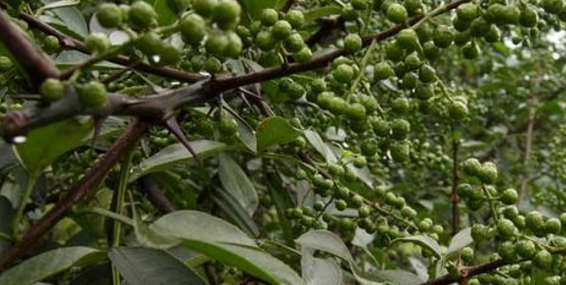There are four main methods for raising seedlings of Zanthoxylum bungeanum, including planting, grafting, cutting and ramification. The longest use is planting.

Cutting seedling raising method of Zanthoxylum bungeanum
1. Land preparation and fertilization
The seedling-raising land should choose the land with medium fertility or above, flat terrain, non-saline-alkali waterlogging depression, good irrigation conditions, deep turning 30-50 cm, and applying sole fertilizer, so as to make the soil loose and fertile.
2. Film mulching on ridges
After land consolidation, the line can be drawn according to 120 cm row spacing, furrowing along the line, covering the soil on both sides, the top width is 70 cm, and the height is 15 cm. The bed surface should be flat or slightly convex in the middle, without rubble and solid, and the slopes on both sides of the ridge bed should be patted, and then covered with 0.015 mm transparent agricultural film on the built ridge bed. When covering, it should be close to the bed surface, stretched and smoothed so as to make the film flat and wrinkle-free. There is no space between the ground, compact the surroundings with soil, increase temperature and preserve moisture, and check regularly. If damaged areas are found, compact them with soil in time to prevent the wind from uncovering the film.
3. Strip Selection
Cuttings should be collected before SAP end flowing in early spring. Sprouting strips without diseases and pests, strong growth, full buds and no damage should be selected. This strip has abundant tissue, sufficient water and nutrients, strong vitality and easy survival and rooting after cutting.
4. Cutting treatment
First cut the branch into cuttings about 10 cm, the upper cut is 1 cm away from the bud, which is round, and the lower cut is Maltese. If it is too thick, it can also be cut into Maltese. Before cutting, the cuttings should be treated with chemical agents. The cuttings should be immersed in 200 ml/l acetic acid solution for 5 to 10 minutes.
5. Cutting time
From early February to early March, it is advisable to insert buds upward and vertically into the soil on the ridge bed with 10 cm row spacing and 7 cm plant spacing after mulching, so as to make the cut on the cuttings level with the ground. After cutting, small piles are sealed with wet soil at the top of each cuttings.
6. Remove the mound
About one month after transplantation, the small soil heap on the upper part of the cuttings was removed, and the seedlings were pressed tightly with wet soil again to prevent the seedlings from leaking air from the film break and scalding.
7. Nursery management
Water the seedlings once immediately after breaking the film and introducing them, and then water them as appropriate according to the dry and wet conditions. In the middle and late June, there is no significant difference between the soil temperature under plastic mulch and that of bare land. The plastic mulch can be removed and cleaned up.
Soil was then planted at the base of the seedlings for 5 to 7 cm to promote rooting of new stems, expand the absorption area and promote seedling growth. Strengthen seedling management, timely irrigation, pesticide control and so on. Adhere to the principle of "dry wet" irrigation, do a good job of top dressing work to promote seedling growth. Urea or potassium dihydrogen phosphate can be sprayed with foliage and topdressing with a concentration of 1000 times.
8. Control of Pepper Tree Disease
(1) The main diseases that endanger Zanthoxylum bungeanum are gum-flowing disease. The gum-flowing disease of branches and trunks of trees, especially at the base, is what people call "oil-flowing". Flow gum is a disease caused by a fungal parasite. This disease should be prevented and treated in combination with prevention.
(2) Zanthoxylum bungeanum is a positive tree species. It should be planted in the sunny area and in the semi-shady area. We should try to avoid planting in the water-logged and shady areas so as to avoid the occurrence of gummosis.
(3) Topdressing and soil exchange of Zanthoxylum bungeanum are important measures to prevent gummosis. According to the wide and shallow distribution of the root system of Zanthoxylum bungeanum, timely Topdressing and soil exchange are not only beneficial to the growth of trees, but also to change the phenomenon of the next year's results, and can enhance the resistance of trees to pathogens.
(4) Cutting off the diseased branches in time is an important method to prevent the spread of the disease.
(5) pest control should be based on the principle of "prevention and treatment simultaneously", "early treatment" and "treatment of small". Spraying the 800 times liquid of dimethoate to prevent aphids can be used to spray the 600 times liquid of 25% Triadimefon to control pepper rust.
Contact: Mr. Ma
Phone: +86-0374-5699688
Tel: +86-0374-5699688
Email: [email protected]
Add: Fine Chemical Industry Park, Jianan District, Xuchang, Henan, China